Tiger jaws succulent is native to the Eastern Cape province in South Africa. This hot, desert-like climate is often rocky, and these succulents will often be found growing under the rocks.
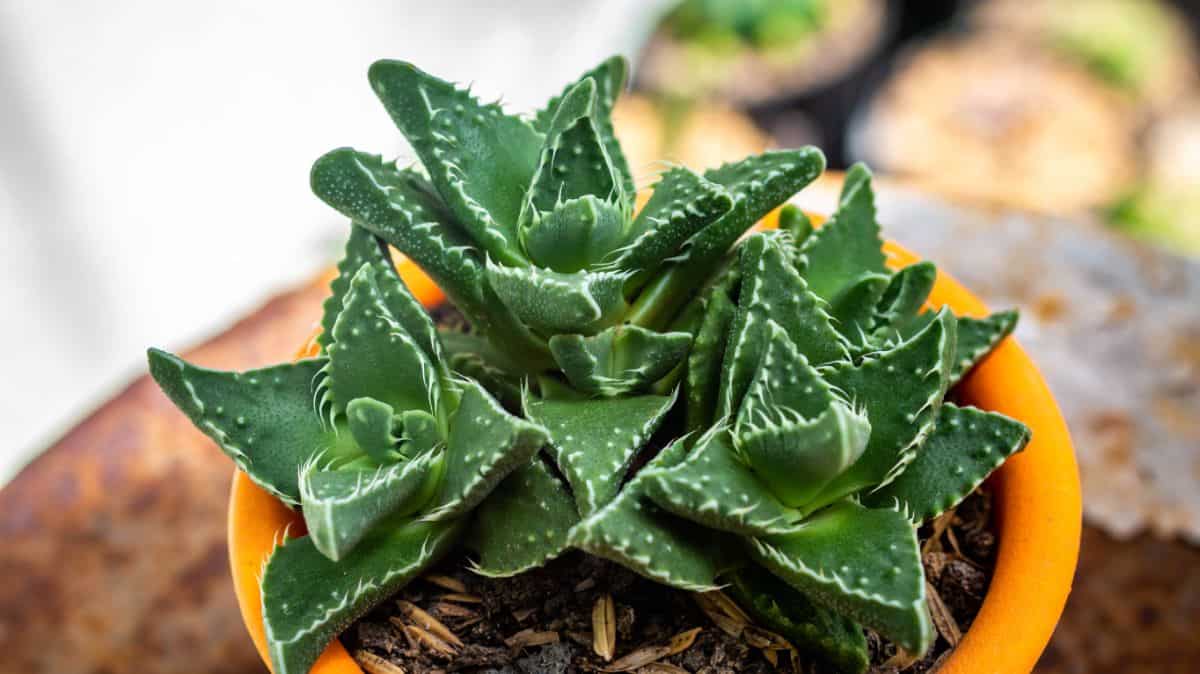
This succulent is a slow grower. Also known as Shark’s jaws, it gets its name from the little tooth-like protrusions along the edges of the leaves. They look hard and sharp, but are actually soft and pliable.
Because it is a slow-growing plant, it is usually best to buy the Tiger jaws succulent as a healthy, established plant from a nursery.
The main growing period of the Tiger jaws succulent is during spring and summer, while it is dormant through most of the winter.
Jump to:
Tiger Jaws Succulent Appearance
| Name: | Tiger Jaws |
| Soil: | Well-drained soil |
| Blooming: | Bloom from fall - early winte |
| Light: | Direct light |
| Water: | When the soil is fully dry out |
| Propagation: | Offsets and cuttings |
Tiger jaws succulent has leaves that are triangular in shape and are about 2 inches in length. They are soft and thick, with little spiked protuberances that look like teeth.
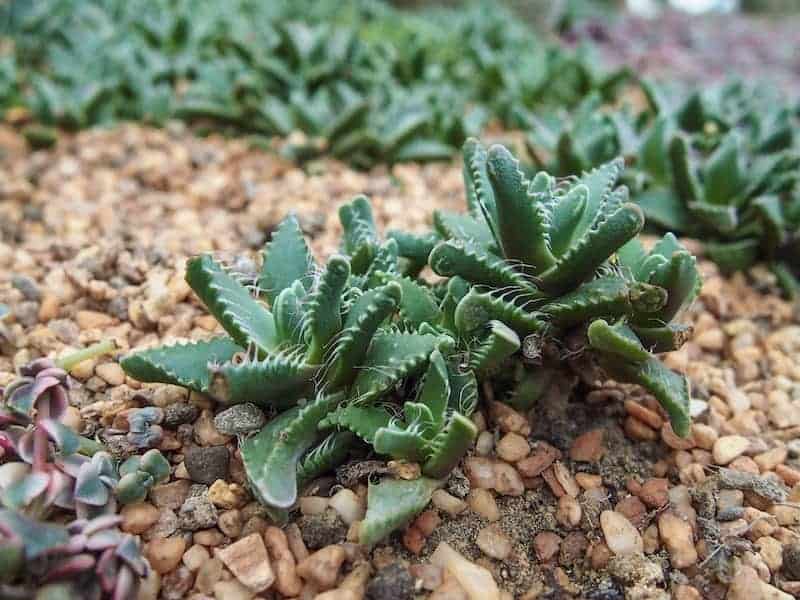
Buy it from:
These spikes help with drainage, directing the water to the bottom of the leaf and down the stem, towards the root of the plant. The leaves form rosettes, which grow very close together in thick clumps.
The plants themselves are fairly low, growing to a height of not more than 6 inches.
Tiger jaws succulent flowers towards the end of summer and into fall, with small bright yellow flowers that are about 2 inches in diameter.
Caring for the Tiger Jaws Succulent
Tiger jaws succulent is similar to many other succulents when it comes to care. It is easy to care for and does not need a lot of attention to maintain it. As long as its basic needs of light and water are taken care of, it can live for many years without any problems.
Light
Tiger jaws succulent is a sun lover. It needs at least 6 hours of direct sunlight a day. While this plant is very popular as an indoor plant, it is generally recommended to take it outside for a few hours every day, especially in summer, to give it the necessary exposure to natural sunlight.
No products found.
Tiger jaws succulent is unlikely to bloom if it is only kept indoors and is never taken outside. It needs outdoor light to encourage the flowers to emerge.
When positioning the Tiger jaws succulent indoors, they should be placed in a room that is south-facing and gets a lot of direct, natural sunlight. This will encourage healthy growth in the plant.
Water
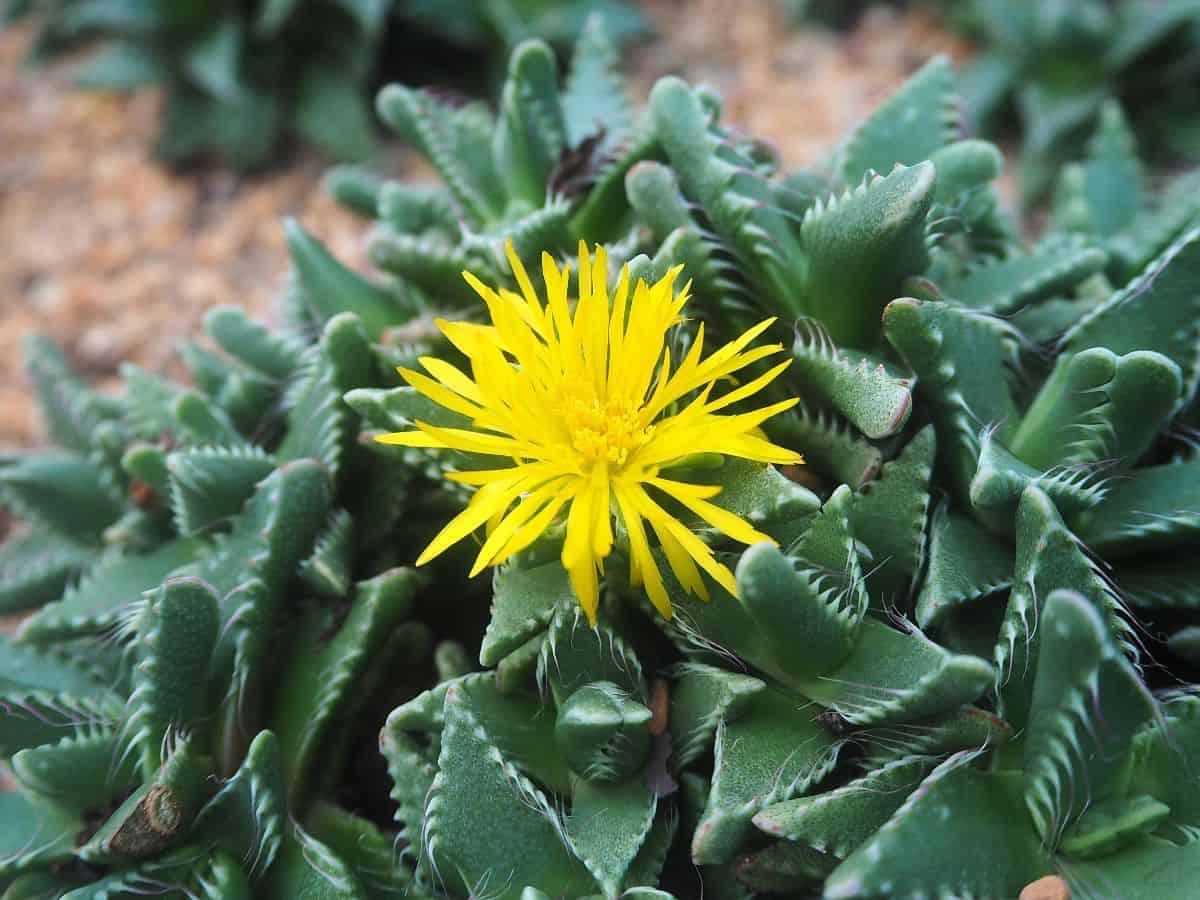
Tiger jaws succulent does not need much water. These plants are used to a sub-tropical natural environment, where they do not have much rainfall.
It is essential that your Tiger jaws succulent be planted in a container with good drainage holes at the bottom, to allow excess water to run off freely.
The recommended method of watering is to soak the plant and soil completely, and then allow it to dry out fully before watering again. In this way, you will avoid the roots sitting in soil that is permanently damp, which can cause them to rot.
In order to test if the soil has dried out fully, you can insert a wooden skewer or kebab stick deep into the soil. It should be completely dry when removed. You can also put your finger into the soil as far as it will go. If the soil is dry to the touch, it is time to water again.
Another effective method of watering is to stand the plant in a dish of water for a few hours. In this way the soil and the roots will suck up the required water through the drainage holes at the bottom of the pot. But the pot should not be left standing in water for extended periods. This will result in overwatering.
Temperature
Tiger jaws succulent is somewhat more hardy than many other succulents, and will survive the occasional bout of light frost. However, it should not be planted in outdoor beds if you live in a zone that frequently experiences very cold temperatures.
It is preferable to plant these succulents in containers. In this way, if the temperature plummets below 20° Fahrenheit, the plant can be brought indoors.
If heavy frost is expected, it is advisable to cover the plants lightly, in order to protect them from frostbite damage. Alternatively, they can be brought indoors overnight.
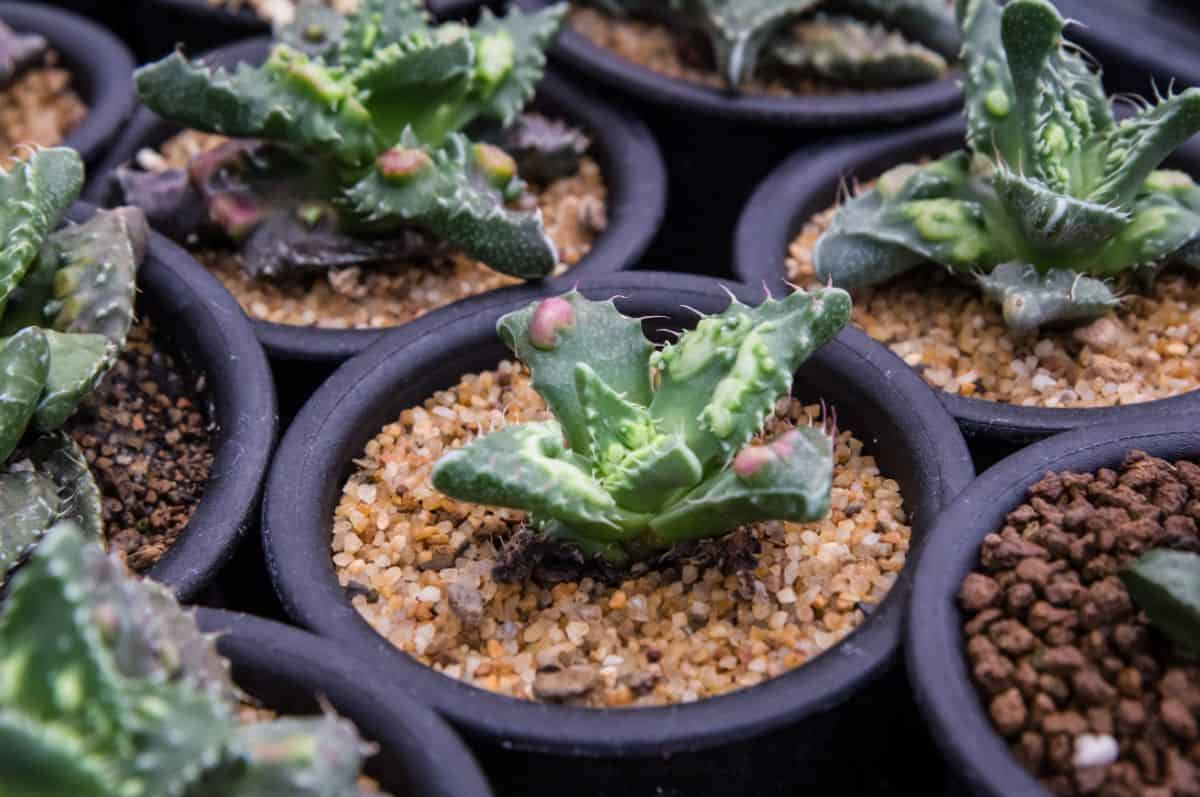
If your Tiger jaws succulent is an indoor plant, it will be happiest in a warm room with a constant temperature. It does not do well if it is exposed to sudden wide fluctuations in temperature.
Soil
The most important consideration when you are preparing the soil for your Tiger jaws succulent is the drainage. If you are planting in containers, it is important for the containers to have adequate drainage holes at the bottom.
The soil should not be overly thick. This will cause it to retain moisture. It should be sufficiently porous and aerated to allow excess water to drain off. The best soil to use is a good quality cactus potting soil, combined with an equal part of mineral grit.
The mineral grit can be made up of coarse sand, perlite, or pumice, or a combination of all 3 of these elements. When blended with the cactus potting soil, they will allow for adequate drainage.
Read Related Topic: Elephant Feed Plant Care Guide
Propagating the Tiger Jaws Succulent
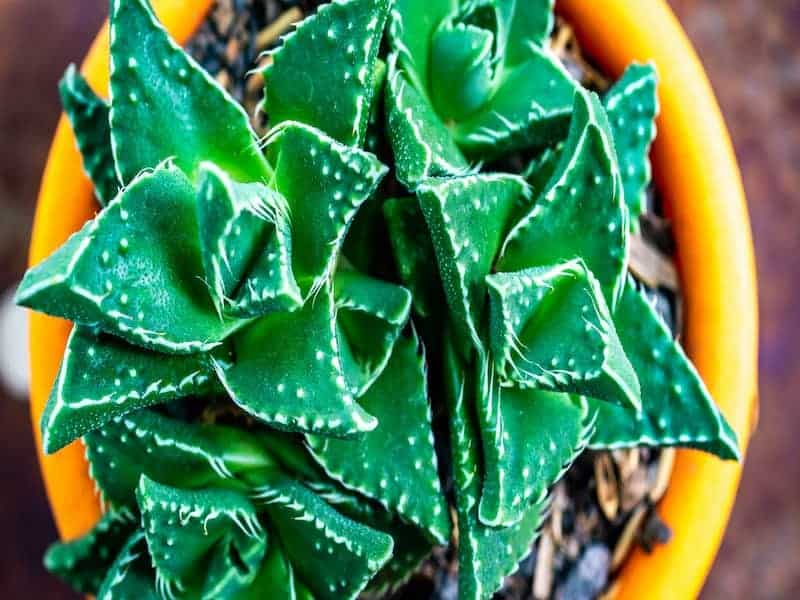
While the Tiger jaws succulent can be propagated from seed, this method is not recommended. Because it is a very slow-growing succulent, it may take a very long time for seeds to germinate and grow sufficiently to become a viable plant.
The best method for propagating the Tiger jaws succulent is by offsets. The plant often self propagates by producing offsets that are easy to separate.
To propagate with offsets, carefully remove the offset from the main plant. If it comes out with roots intact, it can be replanted straight away in a pot with prepared soil.
If the roots of the offset are not visible when you remove it, it should be left for a few days until the base of the offset has been calloused over. It can then be planted in a pot of soil.
Water every few days at first, and once the plant is growing nicely and doing well, gradually cut down the watering frequency, according to the above recommendations.
Common Problems and Pests

The two most common problems that are likely to affect your Tiger jaws are overwatering, and bug infestation.
See Related Article: Zanzibar Aloe (Aloe Juvenna) - A Care Guide
Overwatering
Many people have a tendency to water their succulents too often. If this happens, the soil does not have sufficient time to dry out between watering days. If the roots are left in soil that is permanently damp, they will rot and the plant will die.
Bug infestation
Like many other succulents, the Tiger jaws succulent is prone to infestation by mealybugs. These are tiny little insects that are difficult to see. The clue to their presence is a white film that coats the leaves, and looks like fine, web-like filaments.
The insects themselves usually hide on the underside of the leaves. If you inspect the plant carefully, you will see tiny little spots on the base of the leaves, at the point where they meet the stem.
While many people don’t like the idea of using chemical preparations, the most effective way of dealing with mealybug infestation is to treat with a commercial pesticide. These are available from any nursery or garden center.


